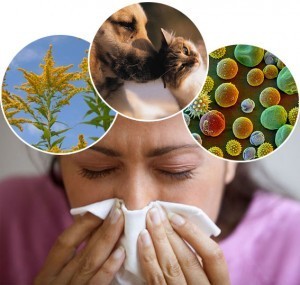 Allergies are the immune system overreacting to substances that should be benign. There has been a significant increase in allergy and asthma (an allergic response in the lungs) symptoms world-wide and the incidence of asthma is more common in Western countries than developing countries and more prevalent in English speaking countries. This tells us that the environment and lifestyle in Westernized countries play a role in the development of allergies.
Allergies are the immune system overreacting to substances that should be benign. There has been a significant increase in allergy and asthma (an allergic response in the lungs) symptoms world-wide and the incidence of asthma is more common in Western countries than developing countries and more prevalent in English speaking countries. This tells us that the environment and lifestyle in Westernized countries play a role in the development of allergies.
There are several nutrients and dietary changes that can be helpful in battling these symptoms. Avoiding foods that are high in histamine is a good place to start. This includes cheese, some wines and certain kinds of fish (tuna and mackerel). Foods rich in tryptophan should also be reduced because tryptophan encourages histamine production. These foods include cottage cheese, liver, peanuts, turkey, lamb, tuna, beef, salmon and cashews. Animal fats (especially grain fed beef, pork and lamb) generally increase inflammatory substances produced in the body and should be traded for grass feed beef and wild game. Including anti-oxidant rich foods (brightly colored fruits and vegetables) and essential fatty acids can be helpful. Onion and garlic are particularly anti-allergic because they inhibit inflammatory enzymes.
Nutrients that can be helpful include vitamin C, E and bioflavonoids, especially quercetin, which decrease histamine release by stabilizing mast cells in the body. Quercetin has an affinity for the lungs and respiratory tract. These nutrients fight both the symptoms and the underlying cause. Advance Health has 2 vitamin C products that contain bioflavonoids called Natural C and Ester C Complex by Douglas Labs. We also have Natural D-Hist from Ortho Molecular that can be helpful. It is a product that contains a number of substances including vitamin C and quercetin. It requires a loading dose initially for 7-10 days and then 1 or more capsules daily for maintenance. There is a chewable tablet for kids and a capsule for adults.
In good health,
Lucinda Harms, RPh
